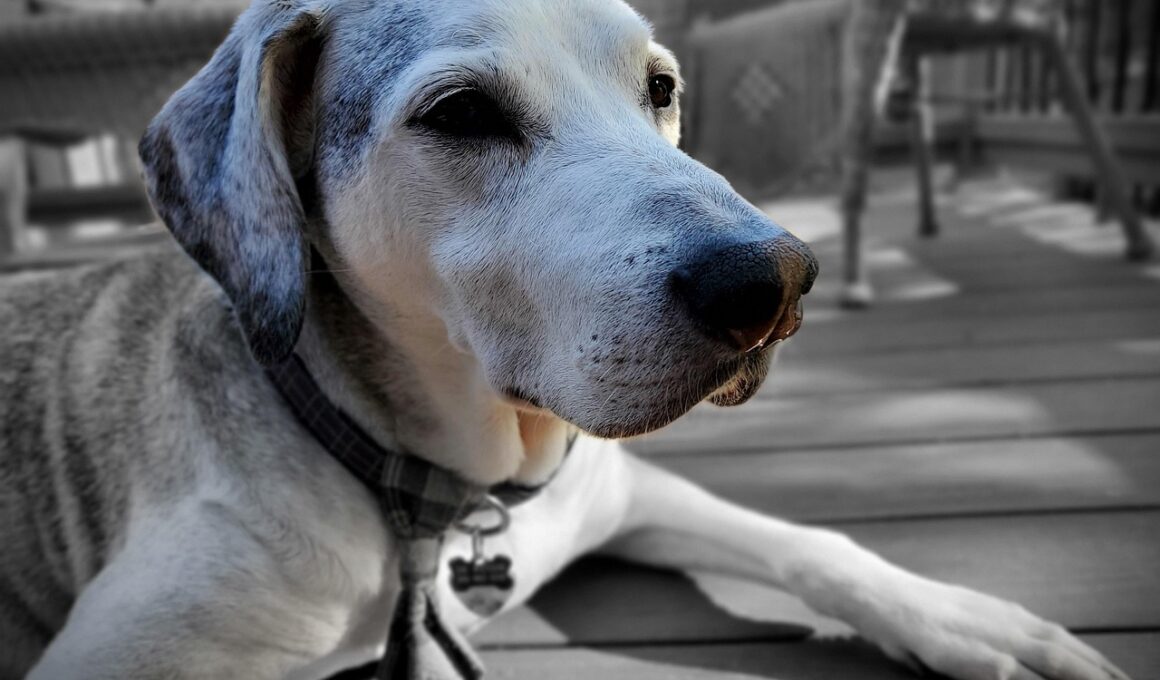Safety Considerations for Senior Dogs with Mobility Issues
As dogs age, they often face mobility challenges that can affect their overall safety and well-being. Mobility issues may arise from conditions such as arthritis, hip dysplasia, or neurological disorders. When caring for a senior dog experiencing these challenges, it’s essential to evaluate your home environment. Ensure that areas where your dog spends significant time are safe and accessible. Consider removing obstacles like rugs and clutter that could cause falls. Furthermore, non-slip surfaces can greatly contribute to the safety of your senior dog. In outdoor spaces, ensure that pathways are clear and well-maintained. A stable, secure leash can also help during walks, providing necessary support.
Senior dogs with mobility issues may struggle with steps and ramps. To combat this, installing ramps can provide easier access to different areas of your house, like the car or your porch. If your dog cannot navigate stairs safely, block access to the stairs to prevent falls. You might also invest in doggy steps that can help your pet comfortably reach higher areas such as a bed or couch. Additionally, using pet gates can help restrict movement to safer zones within the home. Regular trips to the veterinarian for evaluations can help manage your dog’s conditions more effectively.
Providing Comfort and Support
Creating a safe space is vital for the well-being of senior dogs with mobility issues. This can include providing a comfortable bed situated in a quiet area, away from foot traffic. Make sure that the bed is not too high off the ground, which could be challenging for your dog to climb on or off. Orthopedic dog beds can offer joint relief and comfort. You might also want to consider using supportive harnesses, which can help assist your dog when standing or walking. With these solutions, you enable your dog to feel secure, optimizing mobility.
Regular exercise remains important for senior dogs, even those with mobility issues. However, the intensity and duration must be adjusted to suit your dog’s capabilities. Short, frequent walks or gentle outdoor activities can aid in maintaining joint flexibility without overexerting your pet. Furthermore, engaging your dog in mentally stimulating activities, such as puzzles or interactive toys, can also contribute to their overall well-being. It’s crucial to monitor your dog during exercises to prevent fatigue and ensure safety in their movements. Always consult your veterinarian for tailored recommendations related to your dog’s exercise regimen.
Nutrition and Weight Management
A balanced diet is essential for supporting the health of senior dogs, especially those dealing with mobility issues. Weight management is critical, as excess weight can strain already weakened joints. Consult with your veterinarian about giving specialized dog food that supports senior dogs, promoting weight maintenance and joint health. Look for formulas rich in omega-3 fatty acids, glucosamine, and antioxidants. Keeping your pet hydrated is equally important, so always provide fresh water. Adjusting portion sizes to accommodate your dog’s activity level can also prevent excessive weight gain, allowing for easier mobility.
Consider supplements that are designed for senior dogs with mobility challenges, as these can potentially ease discomfort and improve joint function. While many owners are tempted to give their pets treats frequently, it’s crucial to do so in moderation to avoid weight issues. Engaging your dog in fun, low-impact activities can also promote a healthy lifestyle. Enrichment activities, like gentle fetch with lightweight balls or swimming, can prove beneficial. Always monitor your senior dog’s reactions to new activities or dietary changes, ensuring their comfort throughout the transition.
The Importance of Regular Veterinary Visits
Frequent veterinary check-ups are essential for senior dogs, especially those with mobility issues. Early detection of health problems is crucial as these can greatly affect mobility and quality of life. Vet check-ups can include physical examinations, weight assessments, and possibly radiographs to evaluate joint health. Your veterinarian might also recommend joint injections or therapies suited for senior dogs, such as laser therapy or acupuncture. An open dialogue with your vet about your dog’s behavior and mobility is crucial. This ensures the optimal care for your beloved pet, improving their comfort.
It’s imperative to stay informed about evolving advancements in canine health and mobility solutions. However, no precautions can replace the bond between you and your furry friend. Consistent love, understanding, and alternate solutions for mobility can yield an impactful difference in your pet’s life. Effective communication with your veterinarian, along with applying these safety measures, can improve both the quality of life and safety for your senior dog. Making these adjustments will allow both you and your cherished pet to enjoy many more years of companionship.


